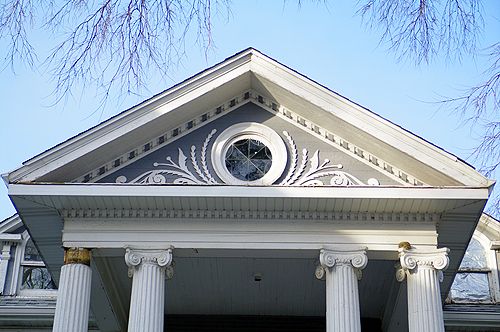Neoclassical, 1900-1950
 |  |
The Neoclassical style of architecture was fusion of architectural styles common during the late 19th century including Georgian, Adam, Early Classical Revival, and Greek Revival . The style was influenced by the 1893 Columbian Exposition, also known as the Chicago World’s Fair and the 1901 Pan-American Exhibition in San Francisco.
| |
One of the key sites at the Chicago World’s Fair was the Court of Honor which featured white stucco buildings built using classical architectural forms including the classical orders, classical columns, pilasters, pediments, porticoes, entablatures, and other ornaments on a monumental scale. This area of the fair came to be known as The White City. Many architectural and urban historian have credited its design with ushering in the City Beautiful movement during which the design of urban buildings and urban space drew inspiration from neoclassical features and forms in an effort to create social order through the careful design of the built environment.
| |
The style also found expression in residential architecture. Common features of Neoclassical houses are a full-height porch with a pediment supported by classical columns, typically of Ionic or Corinthian order, and a symmetrical facade with a central door and symmetrically balanced windows. Neoclassical houses are found in five different forms including those with a full-height entry porch, a full-height entry porch with lower full-width porch, a front-gabled roof, a full-facade porch, and one-story. Cornices, doorways, windows, and porch-supporting columns are usually the most elaborate elements of Neoclassical houses. | |
